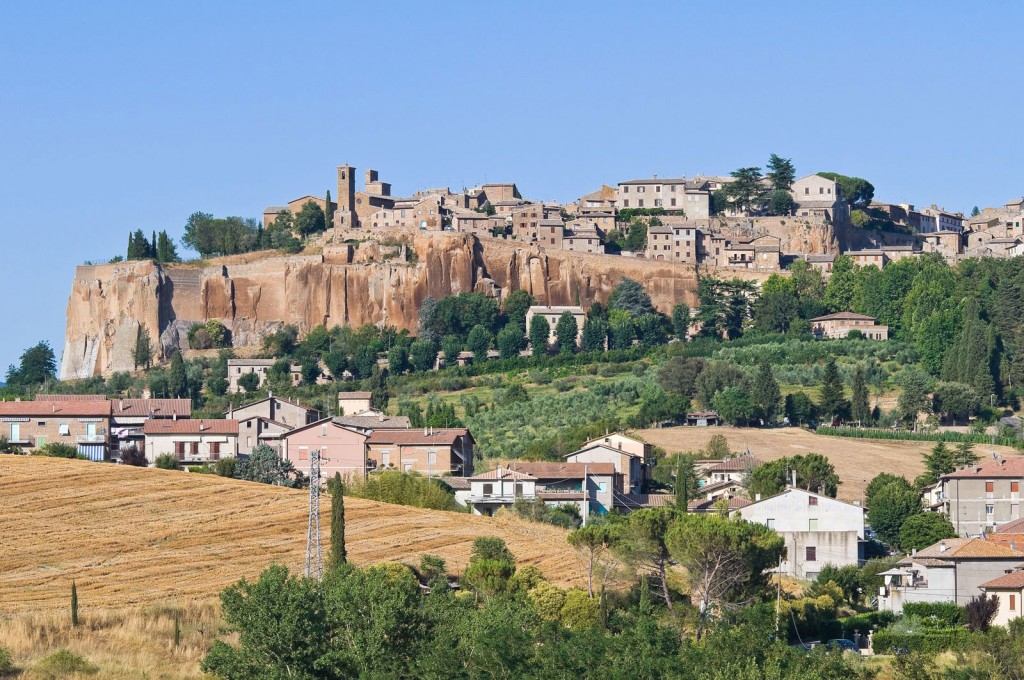
Orviety, Umbria in Central Italy. Photo © milla74/123rf.
If you’re scouting out a place to live, there just isn’t time in one week to wait in line at the Vatican Museums, wander through the Forum, see the Uffizi in Florence, take a gondola ride in Venice, and still familiarize yourself with the countryside in between.Beware; you will be spending a lot of time in the car, but if you hope to see enough countryside to get a feel for what the homes are like, there is really not much of an alternative. The best solution would be to sacrifice some sightseeing to spend an extra day in the town or city that you think could be your new home. The goal of this fact-finding trip is to pinpoint a location where you can eventually plan a short-term rental.
It’s shocking how quickly a week will fly by in Italy. If you have 10 days, you’ll probably want to stretch out your visit to the corner of the country that is your focus, even if there is a huge temptation to see what else the place has to offer. Italy is not a massive country geographically, but there are hundreds of sites that demand a visit. For first-time visitors, a 10-day trip should encompass the route from Naples to Rome to Florence, and then either the western route through Genoa and Turin, or northeast to Milan and Venice. Take a couple of days in each and refer to the weeklong itineraries in Moon Living Abroad in Italy.
A visit to the Vatican takes up much of the day in itself, and yet that’s only the tip. Naturally, you can’t leave Italy without having seen the Pantheon, Piazza Navona, the Trevi Fountain, and the Spanish Steps. Fortunately they’re all within walking distance, and with the exception of the interior of the Pantheon, you can, and should, see those spotlit sites in the evening, gelato in hand, after an aperitif in Campo de’ Fiori and a pizza in the alleyways between there and Piazza Navona. I would save daylight hours for a morning walk or inline skating in the Villa Borghese and exploring the neighborhood near the Colosseum: the crypts beneath San Clemente, the recently discovered Roman Houses nearby, and the Domus Aurea, Nero’s underground palace, if it’s not under restoration.
This is going to be an eating and driving day. Obviously you could and should spend a week in this part of Tuscany, but the basics are to see some vineyards, pick up a collection of wine, and spend the evening in one of Chianti’s lovely agriturismi.
Spend the morning exploring the countryside and the afternoon and evening ticking off boxes in Florence. There’s good reason for this. For purists, wine-tasting is done in the morning before breakfast, which incidentally is the worst possible time to try to visit the Uffizi in Florence. Spend the early afternoon visiting other sites in the city, and the line will be shortest an hour or two before the Uffizi closes. There’s no sense in spending your day in line.
This may seem at first glance like a lot to manage in one day, but these four small cities are each a quick trip from each other along the autostrada or train line. Aim for an early lunch of tortellini in Bologna before moving on to Verona for more serious sightseeing: the Arena for sure, Juliet’s house if you must. Vicenza is worth at least a cup of coffee and a stroll down its main drag to admire the architecture, but Padua is where you should spend most of the late afternoon. Pop into the Scrovegni Chapel before it closes, and then enjoy the university atmosphere in the evening.
As with Rome, you’ll need a bare minimum of two days in Venice, not so much because of all there is to see, but because there’s so much to experience. You’ll eat up a lot of time getting lost in its labyrinthine streets—even the best map won’t remedy that—yet the idea is to relax and enjoy that experience.
Unless you’re a sailing or windsurfing fanatic, in which case you might want to spend the whole day on Garda, I would recommend getting to Lake Como as quickly as possible to make the most of its unparalleled views. An afternoon hike in Menaggio, a ferry across to Bellagio, and another to the eastern side of the lake at the Vecchia Varenna restaurant ought to do the trick. It’s also the most practical way to see the lake, since the train line and the highway back to Milan are on the eastern shore.
Address all of your fashion needs here before departing Italy; make reservations well ahead of time to see Da Vinci’s The Last Supper, and possibly a night out at La Scala or a soccer game at San Siro; be sure to have a Campari-based cocktail at an outdoor café in Brera, and you might even decide to sample some late-night clubs.
Of course, it’s best if you can arrange to fly out of Malpensa, but if you need to return to Rome, keep in mind that the high-speed train will get you to the Termini train station in 4.5 hours, but budget in another 45 minutes to Fiumicino. If you can make it a full travel day, take time to stop off in one of the cities along the way. Intercity trains stop in such worthy spots as Parma, Modena, Arezzo, and Orvieto, which you would have seen already had you been allowed more time.
Excerpted from the Third Edition of Moon Living Abroad in Italy.